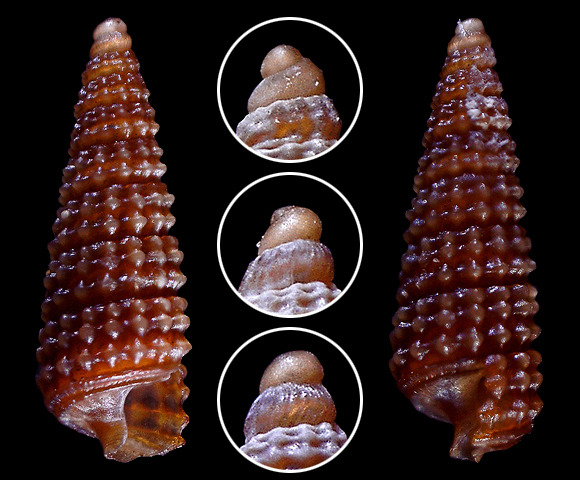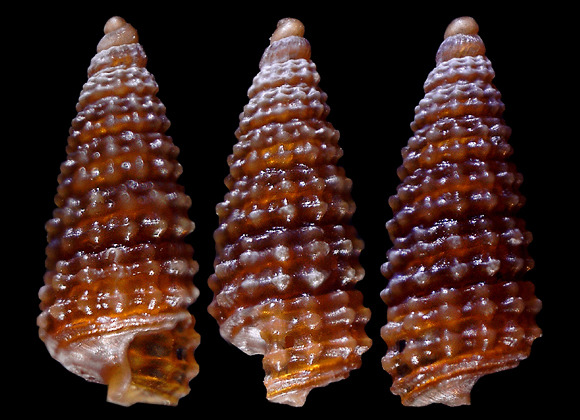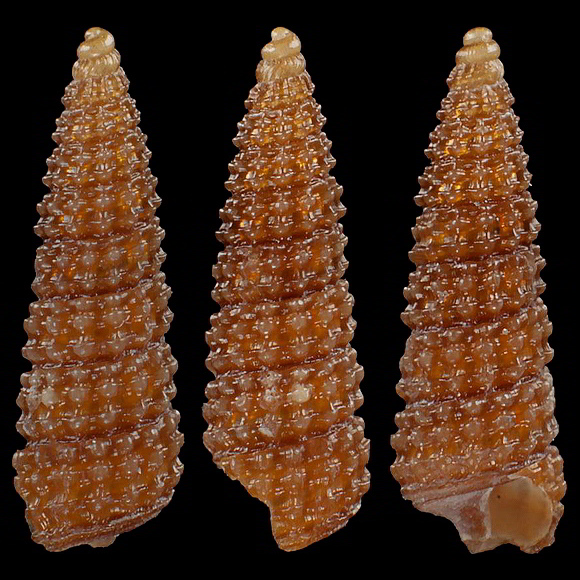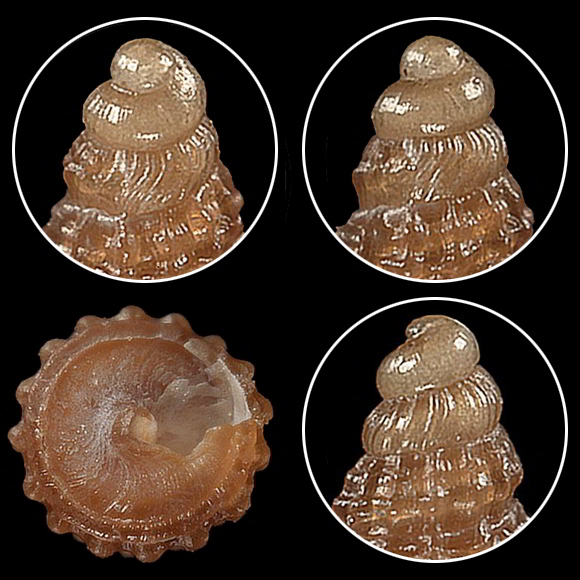
Predator on sessile preys in the low infralittoral-circalittoral.
Protonym: Cerithium cylindratum.
« Shell rather cylindrical, thick, opaque, lustreless. Sculpture: numerous straight longitudinal striae, which are crossed by fewer and finer spiral thread-like striae, so as to present a reticulated appearance and to make the points of intersection tuberous or scabrou ; the spiral striae are 4 on the last whorl, besides a basal line below the periphery, and 3 on each of the preceding whorls; the second, and sometimes also the third whorl is marked with close-set and curved longitudinal striae; the first whorl is quite smooth and glossy. » – J. G. Jeffreys: “n the Mollusca procured during the ‘Lightning’ and ‘Porcupine’ expeditions, 1868-70 (Part IX)”, Proceedings of the Zoological Society of London, year 1885, p.95.
45m deep, Cannizzaro, Catania, E. Sicily. 3,5mm.

« Colour pale yellowish-brown. Spire gradually tapering to a blunt point. Whorls 10-12, rounded but compressed; the last equals about one third of the length of the shell; the first is bulbous […] Suture narrow but distinct. […] Outer lip thickish and prickly. Inner lip filmy. Pillar flexuous. » – Synonym urioi.
40m deep, Cannizzaro. 2,5mm.

35m deep, Circeo, Latina, Lazio, W. Italy. 3,2mm.
Original pictures provided by A. Nappo (IT).
– (CC BY-NC-SA) –

Protoconch: first whorl adorned with thin orthocline radials crossed by 3 very weak spiral keels; on the second whorl, the radials become flexuous and opisthocline; at the transition, these radials revert to orthocline. – Base: the two cords that encircle the base distinguish Krachia from the other genera.